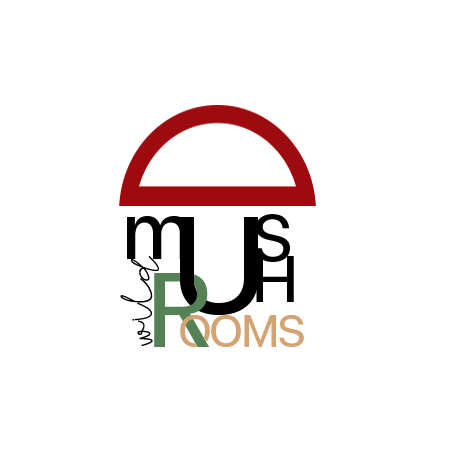July is the start of the summer mushrooms and a continuation of those mushrooms which started last month: Oysters, Agaricus, and the “Red Tops”. In Alberta, the beginning of July also marks the start of our King Bolete season, though they certainly are not particularly common.
Amazingly, the Morels are still fruiting out at Thompson Creek. If you have not yet been out I recommend a trip. This is aonce in a lifetime experience for many morel pickers.
My July favourites include: Hericium, Fairy Rings and Russulas, a greatly undervalued edible mushroom family.
King Bolete – Boletus edulis. King boletes are not common in Alberta, but I have already seen two of them this year year. When we get a deacent amount of rain they can be found, usually in mixed wood with a few pine associated, but they can be founf in pure aspen and poplar stands. Kings are easily recognized by the embossed net on those big bulky stalks. The much more common Leccinums or Red tops are sometimes confused with the King, but the King has flesh that does not stain. There are no gensral rules for determining if mushrooms are edible or not but in Alberta, there are just about no poisonous boletes, In twenty-five years of picking I have only found one poisonous bolete, so to make sure always check a field guide. There is a rumored “Eldorado” patch of Kings in the Robb area as well as up in the Pierre Grey Lakes area near Grande Cache.Other than that they can be found here and there usually growing alone or in small groupings.
Hericium corraloides or Comb tooth or Coral mushrooms are hard to mistake with anything else. A white mushroom with delicate branches covered with teeth and a wonderful anise aroma. They are found growing on aspen or poplar logs. Delicious lightly sauteed or made into an omelette.
Fairy rings or Marasmius oreades. The fairy ring is one of the most maligned and under appreciated wild mushrooms we have. It is an excellent edible mushroom and is often served in gourmet resturants under the name of Mousseron. These Marasmius are the most commonly found mushrooms growing in rings in grassy areas throughout the province. But be aware that many different mushrooms grow in rings. These include a number of poisonous or non edible genera that grow on lawns. Heboloma, Clitocybe, Conocybe, Agrocybe, etc. as well a some edibles like Agaricus.
Fairy rings can be easily differentiated by the white to off-white spore print, narrowly attached gills, wide gill spacing with obvious intermediate gills, and a tough stalk. To make sure always check a field guide.
Russulas are a very common mushroom genera which grow in association with a wide variety of trees. These are commonly picked by Northern Europeans and are known as “brittle caps”. Why? They have brittle caps in a multitude of colors, white stalks that snap like chalk, spores that range from white to deep yellow. They are easy to identify as Russulas but quite difficult to put an exact species name on. The brittle one that ooze out liquid or mike are Lactarius. One of hte main characteristics to defferetiate is taste. Take a very small bite, give it a chew around the tip of your tongue and then spit it out. Many have a very acrid bite on the tongue. These ones can cause digestive upset though some people neutralize the acid by boiling. Personally, I avoid those. Also watch for bruising. Some Russulas bruise brown, like the uber-delicious Russula xeramphalina, some grey like decolorens or claraoflava, and always avoid the ones that bruise black. Russulas come in all kinds of colors with my favourite edible ones being the purplish – xeramphalina,the green – aeruginescens, and the yellow – claroflava.Always cook all your mushrooms, especially Russulas.
BY: Martin Osis
The Alberta Mycological Society is a non-profit organization that was founded by Prof. Randy Currah and Helene (Leni) Schalkwijk-Barendsen in 1987. From those modest beginnings and a small local membership comprised of professional and amateur mushroom lovers, the Edmonton Mycological Society has grown over the past 20 years and currently has about 170 active members from across Alberta. We changed our name from the Edmonton Mycological Society to the Alberta Mycological Society in late 2007 in response to our increasing influence in all things mycological in Alberta and our growing province-wide membership and activities.
We are a volunteer study group, whose members are fascinated by fungi. As the only mycological club in Canada’s prairie provinces, we provide education to promote an understanding and appreciation of the Kingdom of Fungi.
Ongoing activities include the study of the diversity and roles of fungi, providing educational programs to the public, seasonal forays into the Rocky Mountain foothills and southern boreal forest, mushroom identification workshops, an annual mushroom exposition (“City of Champignons”), development of lists of fungi from various ecosystems across Alberta, and an annual gourmet mushroom dinner (the “President’s Dinner”).
The Alberta Mycological Society is also an Alberta Poison Liaison link and a Volunteer Steward for the Poplar Creek Natural Area near Breton. In 2006, we received the Parks and Protected Areas Outstanding Group Steward Award for our committment to the Poplar Creek Natural Area since 1992.
We welcome everyone to join our society and learn along with us about fungi.
Alberta Foray – Northern Lakes College (Grouard, Western Lesser Slave Lake) – Aug 2009
Photo: Alan Fleming
Row 5 L-R Robert, George, Pieter, Steve, Bill, Kelly, Tyler
Row 4 L-R Chris, Michael, Guntis, Steve, Mike, Andre, Clause, Gerlinde, Jerry, Martin
Row 3 L-R Doris, Kim, Mitch, Jean, Tracy, Lorraine, Patrick, Denise, Rae, Alan
Row 2 L-R Corey (kneeling), Melanie, Diane, Rosemarie, Ken, Ali-Sun, Noella, Ann, Bob
Seated The Scientists L-R Christine (Bellingham), Inita (Latvia), Sean (Reno), Roland (Athabasca U), Paul (UBC)
